Exploring the Dynamics of One-Room Bedroom Apartments
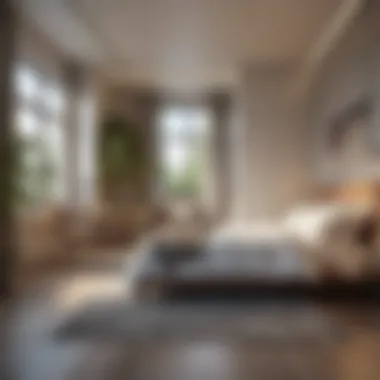
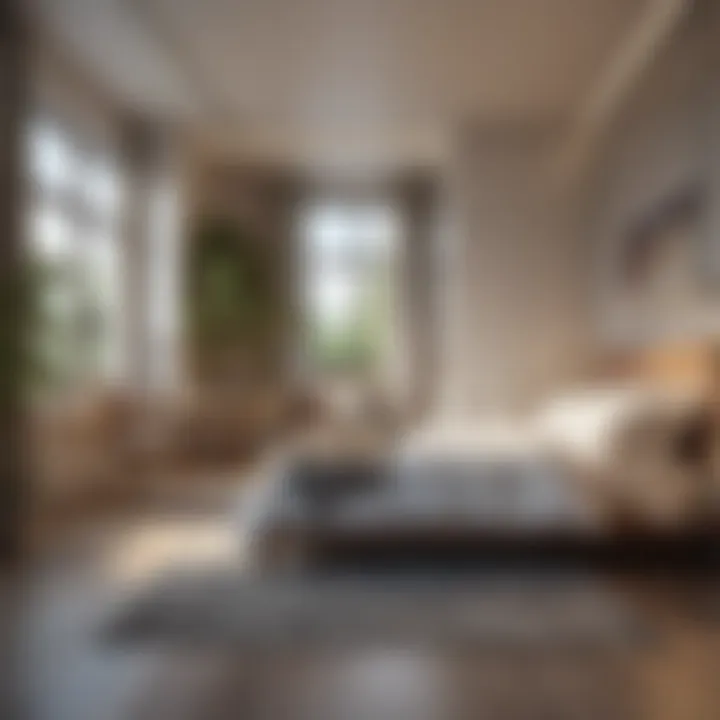
Intro
One-room bedroom apartments have emerged as a distinctive option in modern urban living. As cities become denser and housing demands evolve, these compact spaces present unique challenges and opportunities. Understanding the dynamics of one-room living goes beyond just the physical space; it involves recognizing the social and emotional implications of living in smaller environments. This article aims to provide a thorough analysis of one-room bedroom apartments, examining their architectural features, functional advantages, and the aesthetic choices that make them livable and inviting.
By delving into these aspects, we aim to identify opportunities that can inform both design solutions and lifestyle adjustments for individuals choosing to inhabit these intimate living spaces.
Home Features
Architectural Marvels
One-room bedroom apartments are often designed with intentionality. Architects seek to maximize functionality while maintaining aesthetic appeal. These apartments can showcase innovative approaches such as:
- Open floor plans that blend living, sleeping, and working areas seamlessly.
- Large windows that invite natural light and create a sense of openness.
- Smart storage solutions integrated into walls to save space without sacrificing style.
Such elements not only enhance the appearance of the apartment but also contribute to a more efficient use of space. For instance, using vertical space is key. Tall bookshelves or wall-mounted cabinets can keep the floor area uncluttered.
Unique Design Elements
Distinctive design decisions can further optimize the limited space available in one-room apartments. Features that can significantly impact livability include:
- Multifunctional furniture, such as a sofa bed or a foldable desk, which can transform a living area into a sleeping quarter when needed.
- Sliding doors that can separate spaces when privacy is desired without requiring extra floor area for swing doors.
Incorporating local or sustainable materials can also add character and uniqueness to the design, further enhancing the emotional resonance of the space.
Interior Design Inspirations
Color Palettes and Themes
The selection of colors within a one-room bedroom apartment can greatly affect how space is perceived. Light and neutral tones tend to create an airy feel, making the room seem larger. Accent walls or carefully chosen decor can introduce personality without overwhelming the senses. Potential themes might include:
- Minimalist designs that highlight simplicity and utility.
- Bohemian styles that allow for strong, eclectic expressions of personal taste.
Choosing the right palette is essential for cultivating an atmosphere that feels relaxing and inviting.
Furniture Arrangement Tips
Strategic placement of furniture can profoundly alter functionality and comfort. Some effective strategies include:
- Zoning: Delineate areas within the room for sleeping, working, and relaxing through furniture positioning.
- Avoiding clutter: Keep pathways clear and consider the size and proportion of each item in relation to the space.
Creating a cohesive flow between different areas can also enhance the user experience significantly.
A well-designed one-room apartment can offer as much comfort and functionality as a larger home, provided careful planning and thoughtful choices are considered.
As urban environments continue to evolve, the one-room apartment remains an intriguing option for those seeking efficiency and individuality in their living spaces.
Preamble to One-Room Bedroom Apartments
One-room bedroom apartments, often referred to as studios or efficiency apartments, offer a unique living experience that caters to modern lifestyles. The significance of this topic lies in understanding how these spaces can be optimized for living, working, and recreation. Given the increasing trend toward urbanization, many people are seeking efficient living arrangements. This trend often leads to a deeper exploration of architectural designs and efficient use of available space.
The benefits of one-room apartments include affordability, ease of maintenance, and simplicity of living. These small units are particularly appealing in metropolitan areas where housing costs are prohibitive. With rising demand for compact living, it's crucial to examine how to maximize utility without sacrificing comfort.
Definition and Overview
One-room bedroom apartments combine living space, sleeping area, and often a small kitchenette into a single area. They are designed to make the most out of limited square footage, typically covering anywhere from 300 to 600 square feet. Functionality is key in these designs, as every element must serve a purpose while contributing to an aesthetic environment.
In terms of layout, these spaces may include an open floor plan that merges living and sleeping areas. This design fosters a sense of spaciousness and encourages creativity in furnishing and decoration.
Historical Context
The concept of one-room apartments is not new; they have evolved over many decades. Originally, they emerged as a necessity for working-class individuals seeking affordable urban housing. In the early 20th century, particularly during the Industrial Revolution, cities experienced a massive influx of people moving for job opportunities. This led to high demands for efficient living spaces.
Throughout the decades, economic changes and cultural shifts influenced the design and perception of one-room apartments. In the 1950s and 1960s, they became a popular choice for single professionals and college students. As urban lifestyles gained traction, architects and designers started to innovate, utilizing new materials and design techniques to enhance both functionality and style. Today, one-room apartments reflect current trends in minimalism and sustainability, appealing to a broad demographic, from young professionals to individuals seeking to downsize.
"The evolution of one-room living reflects societal changes, impacting how we view space and our personal needs in today's world."
With a deeper understanding of these apartments' definition and history, we can now explore their architectural features, as they play a vital role in shaping the experience of living in such compact spaces.
Architectural Features
The architectural features of one-room bedroom apartments play a crucial role in determining their functionality and appeal. These elements must balance aesthetics with practicality, ensuring that the limited space is utilized efficiently while also creating an inviting atmosphere. The layout, materials, and sustainability considerations incorporated into these designs can profoundly impact the living experience.
Layout Considerations

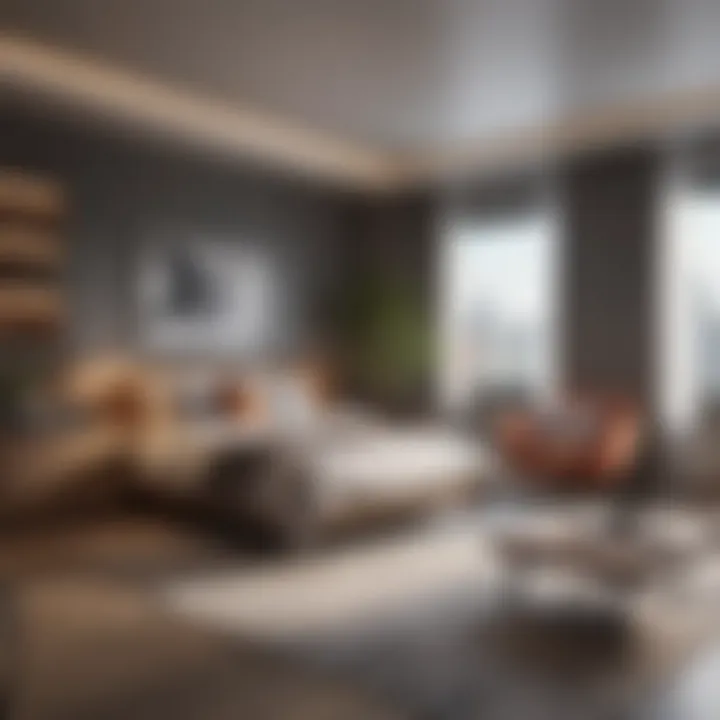
The layout of a one-room apartment is vital. It dictates how residents move through the space and interact with its various functions. Open floor plans are favored in many modern designs, allowing for a seamless flow between areas. This is important for maximizing the perceived size of the space. Multi-zone layouts often feature designated areas for sleeping, working, and cooking, even if they are not separated by walls.
Consideration of furniture placement is also significant. For example, strategically placing a sofa to create a visual barrier between sleeping and living areas can enhance privacy without sacrificing openness. Moreover, flexibility in layout is key. Furniture that can be easily rearranged or stored can adapt to the owner's needs.
Building Materials and Techniques
Building materials and construction techniques used in one-room apartments contribute to their durability and comfort. Common materials include lightweight options such as drywall and modular components that can reduce construction time and costs. They are also easier to modify if changes are needed in the future.
Additionally, quality insulation is often prioritized to enhance energy efficiency. Using materials that provide good thermal performance can significantly decrease heating and cooling costs over time. Not to forget, finishes that withstand wear and tear are preferred for their long-lasting nature.
Sustainability Aspects
Sustainability has become a significant consideration in the design of one-room apartments. More builders and designers are focusing on using eco-friendly materials and energy-efficient systems. This not only benefits the environment but can also save residents money on utilities.
Incorporating solar panels, rainwater harvesting systems, and energy-efficient appliances are becoming more common. Furthermore, designs that emphasize natural light can reduce the need for artificial lighting, enhancing both the environmental footprint and the well-being of the inhabitants.
"Sustainable living should be at the forefront of modern apartment design, especially in urban environments where space is limited."
In summary, the architectural features of one-room apartments are essential in shaping the living experience. Attention to layout, thoughtful choice of materials, and a commitment to sustainability can lead to highly functional and appealing living spaces.
Functional Aspects
Understanding the functional aspects of one-room bedroom apartments is essential for maximizing their potential. This section examines how the design and layout can influence how we interact with our living spaces. The focus here revolves around dual-purpose arrangements and the effectiveness of utilizing every square inch. These considerations ultimately feed into the overall experience for residents, impacting everything from their daily routines to their mental well-being.
Space Efficiency
Space efficiency is a critical element when discussing one-room apartments. The limited square footage mandates clever design strategies that prioritize usability. Open floor plans often facilitate a sense of expansiveness, even when the physical area is small. The trend of merging living, dining, and sleeping areas encourages fluidity in movement and promotes a more relaxed living experience.
Utilizing vertical space is another effective way to enhance efficiency. Tall shelving units and wall-mounted storage can free up essential floor space. Additionally, optimizing layouts that allow for equal access to different areas creates an effective flow, allowing inhabitants to navigate their apartments seamlessly.
Storage Solutions
Storage solutions in one-room apartments tackle the common issue of clutter. By integrating smart storage options, residents can minimize chaos and maintain a more organized environment. Under-bed storage is a practical solution, allowing for seasonal clothing or other items to be tucked away but easily accessible.
Another innovative approach includes multipurpose furniture with hidden compartments. For example, a coffee table that opens up for storage or a sofa that conceals linens transforms an ordinary piece into a functional storage unit. Incorporating vertical organizers on walls or behind doors is also effective, providing additional places to store items without dominating precious floor space.
"Smart storage design can significantly improve the functionality of one-room apartments, allowing residents to maintain a clean and serene living space."
Multi-functional Furniture
Multi-functional furniture plays a pivotal role in the practicality of one-room apartments. It serves the dual purpose of providing necessary seating or surfaces while doubling its usage for storage. A common example is a Murphy bed, which can fold into the wall during the day, freeing space for other activities.
Sofas that convert into beds also address the challenge of hosting guests in limited square footage. Dining tables that extend or can be folded away combine functionality with convenience.
Ultimately, incorporating these pieces fosters a sense of versatility. This enables residents to adapt their environments according to their varying needs. The result is a home that does not just serve a basic function but adapts to the dynamic lifestyle of its inhabitants.
Aesthetic Considerations
Aesthetic considerations play a vital role in the design and functionality of one-room bedroom apartments. These small living spaces must balance style with practicality. The right aesthetic not only enhances the visual appeal but also contributes to the overall comfort and efficiency of the space. In essence, aesthetics influence how occupants interact with their environment.
Interior Design Trends
Current trends in interior design emphasize simplicity and minimalism. Functionality is at the core, allowing each piece in the room to serve multiple purposes. Popular styles include Scandinavian design, which features clean lines and light colors, and Bohemian, known for its vibrant patterns and eclectic mix of furniture.
Key trends include:
- Natural Elements: Wood, stone, and plants are increasingly chosen for their ability to create a calming atmosphere.
- Smart Storage Solutions: Built-in shelving and modular furniture are essential, maximizing every inch of space while maintaining visual cleanliness.
- Timeless Pieces: Investing in high-quality, timeless furniture prevents the space from feeling outdated too quickly.
Color Schemes and Materials
Choosing the correct color schemes can have a profound impact on a one-room apartment's perception of space. Lighter colors can make a small area seem larger and more open, while darker shades can create intimacy. Neutral palettes often serve as a foundation, with occasional bold accent colors that bring personality to the space.
Consider these points:
- Color Psychology: Colors affect mood and energy levels. Blues can promote tranquility, while yellows often inspire cheerfulness.
- Material Selection: Texture plays a role; matte finishes reduce glare, making a space feel more sophisticated. In contrast, reflective surfaces can add a touch of glamour but may become overwhelming in small areas.
- Cohesion: Consistent use of colors and materials creates a unified look, helping the space feel cohesive.
Lighting and Ambience
Lighting is crucial in enhancing the aesthetic qualities of one-room apartments. It defines how colors are perceived and impacts the overall mood. A well-lit space can feel larger and more inviting, while poor lighting may render even the best designs ineffective.
Key lighting strategies include:
- Layered Lighting: Combining ambient, task, and accent lighting helps create a dynamic atmosphere. For example, overhead fixtures can provide general illumination while table lamps serve specific tasks.
- Dimmable Fixtures: These allow residents to adjust the intensity of the light based on their needs, improving comfort and reducing energy consumption.
- Natural Light: Maximizing windows and using sheer curtains can help boost natural light, making the space feel airy and open.
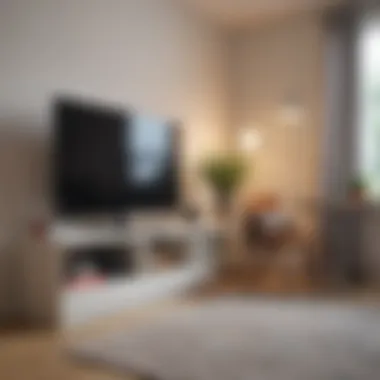
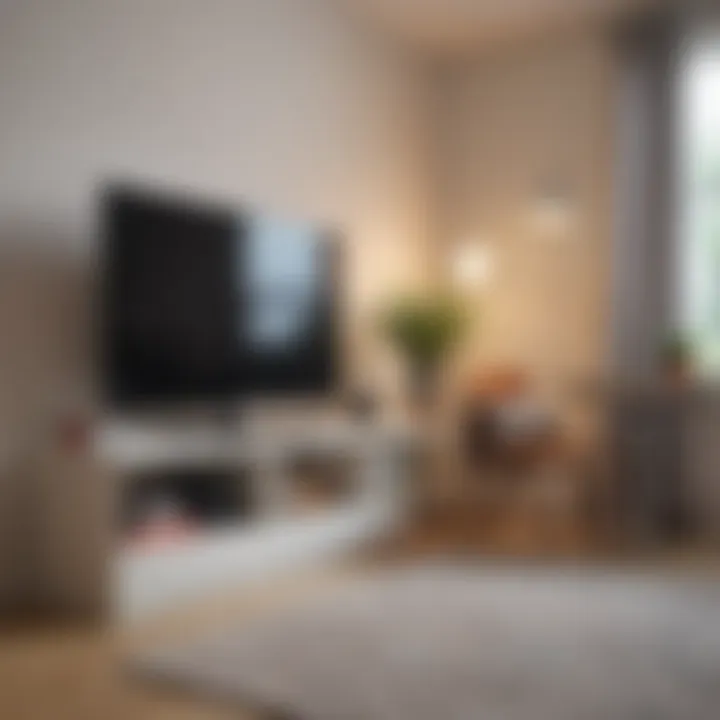
"The right ambiance creates an emotional connection, making small living spaces feel like home."
In summary, aesthetic considerations in one-room bedroom apartments not only enhance the visual appeal but also play a crucial role in creating a comfortable and functional living environment. By focusing on current design trends, thoughtful color schemes, and effective lighting strategies, residents can create spaces that reflect their personal style and effectively suit their needs.
Target Demographics
Understanding the target demographics for one-room bedroom apartments is crucial to comprehending their rise in popularity. Each group has unique needs and preferences that shape how these spaces are designed and function. Focusing on young professionals, students, and individuals looking to downsize, allows us to delve into the specific elements that influence their choice of living arrangements. Tailoring living spaces to meet these demographics can enhance their experience and satisfaction in a one-room apartment.
Young Professionals
Young professionals often seek flexibility and convenience in their living spaces. They typically prioritize locations close to work and social hubs, as commuting time can greatly affect their lifestyle. One-room apartments appeal to this demographic because they offer affordability in otherwise high-rent areas. The compact design of these apartments allows for easier maintenance and encourages a minimalist lifestyle, which resonates with the values of many young professionals.
Moreover, the trend towards remote work or hybrid models has become prevalent among this group. One-room apartments provide an efficient way to create a home office space within a limited area. Choosing multifunctional furniture can greatly help in maximizing utility without compromising style. Therefore, careful planning of interiors with workspace considerations is valuable.
Students
For students, one-room apartments offer an enticing solution to housing challenges often faced during college years. Affordability remains a primary concern. Many students opt for shared living arrangements, but solo living in a one-room apartment can still be financially manageable, particularly in urban settings.
Accessibility to academic institutions and transportation is also vital. Proximity to campus can influence the choice of a one-room apartment. These apartments provide a cozy retreat from the chaos of student life, fostering a productive environment for studying.
A key aspect for students is the ability to personalize their living space. Using creative design choices, like wall art and lighting, can transform a one-room apartment into a vibrant personal sanctuary that reflects their identity.
Individuals Downsizing
Individuals who are downsizing often come from larger homes and are now looking for practical living arrangements. This motivation can stem from various reasons, such as retirement, financial adjustments, or the desire for simpler living. One-room apartments provide an excellent option for these individuals to maintain independence while significantly reducing living expenses.
These apartments require a shift in mindset regarding space and belongings. Downsizers are faced with the challenge of decluttering and selecting only essential items. This process can lead to a more organized and calm living situation.
Furthermore, older adults may appreciate the low maintenance that one-room apartments typically offer. Ease of access is also a consideration, particularly for aging individuals who desire single-floor living and minimal upkeep.
Advantages of One-Room Apartments
One-room apartments offer distinct advantages that cater to modern living. The combination of affordability, low maintenance, and simplicity makes these spaces appealing for various demographics. As urban living becomes increasingly necessary, understanding the benefits of one-room apartments is vital for anyone considering this lifestyle.
Affordability
Affordability is a primary factor in the appeal of one-room apartments. These units generally come with lower rental and purchase prices compared to larger apartments or homes. This affordability opens up housing options for young professionals and students, who may be constrained by budgets. With urban rental markets often dominated by high-priced larger units, one-room apartments allow individuals to secure a residence in desirable locations without extensive financial burdens.
"One-room apartments ensure more people can live in urban areas, even when they face high living costs."
Moreover, the reduced cost of utilities is notable. With less space, individuals can expect lower heating, cooling, and utility bills, thus further enhancing the cost-effectiveness of one-room living. Overall, the financial benefits are significant, allowing for the possibility of saving for other priorities such as travel, education, or investments.
Low Maintenance
Another prominent advantage of one-room apartments is their low maintenance requirements. Fewer square feet translate into less time spent cleaning and organizing. This is particularly beneficial for working professionals who may have demanding jobs or students with busy schedules.
The simplicity of maintaining a smaller space also encourages efficient cleaning practices. With fewer items and clutter, organizing belongings becomes easier, resulting in an effortless living environment. Additionally, these apartments often have fewer appliances and fixtures, which can lead to less potential for breakdowns or costly repairs.
In essence, the low maintenance aspect liberates residents from household burdens, allowing them to focus on their careers, studies, or social lives.
Simplicity of Living
Simplicity is an inherent quality of one-room apartments. Living in a compact space encourages minimalism and intention behind personal belongings. This can lead to a more mindful lifestyle, promoting habits of decluttering and prioritizing quality over quantity.
For many, one-room living challenges individuals to curate their environments. They can choose versatile furnishings that serve multiple purposes, fostering creativity. This simplicity also often leads to a greater sense of community, as residents may engage more readily with their neighbors in tighter living situations.
Furthermore, the straightforward lifestyle can be appealing. When the complexities of managing a larger home are removed, individuals can redirect their attention to personal development, hobbies, or building relationships.
These advantages collectively highlight the increasing relevance of one-room apartments in today's fast-paced world, where efficiency and affordability are essential to navigating contemporary living.
Disadvantages of One-Room Apartments
One-room apartments present unique challenges. Understanding these disadvantages is crucial for potential renters or buyers. While these living spaces can be practical, one must consider several factors that can affect quality of life.
Limited Space
Space is the most apparent drawback of one-room apartments. The lack of separate rooms can make these spaces feel cramped. Hence, effective use of every square foot becomes vital. Individual preferences for personal space and room for belongings might clash with the compact nature of one-room apartments. Additionally, hosting guests may be uncomfortable, as privacy and personal boundaries can blur. It is important to assess how much space is necessary for daily activities and if one-room living fits these needs. Moreover, some individuals may find it difficult to unwind in a space that doubles as a living area and bedroom.
Privacy Concerns
Privacy is another significant issue in one-room apartments. The absence of distinct areas means that daily routines are often exposed to others. This can be especially problematic in shared living situations. For example, if a couple shares a one-room apartment, one partner’s habits may intrude on the other’s. Sound can travel easily, disrupting personal time or sleep. Furthermore, the lessened privacy can create tension among roommates, making it challenging to maintain harmonious relationships. Thus, the design of one-room units should prioritize sound-proofing and layout flexibility to mitigate these concerns.
Potential for Clutter
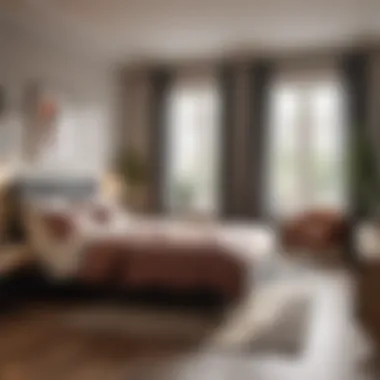
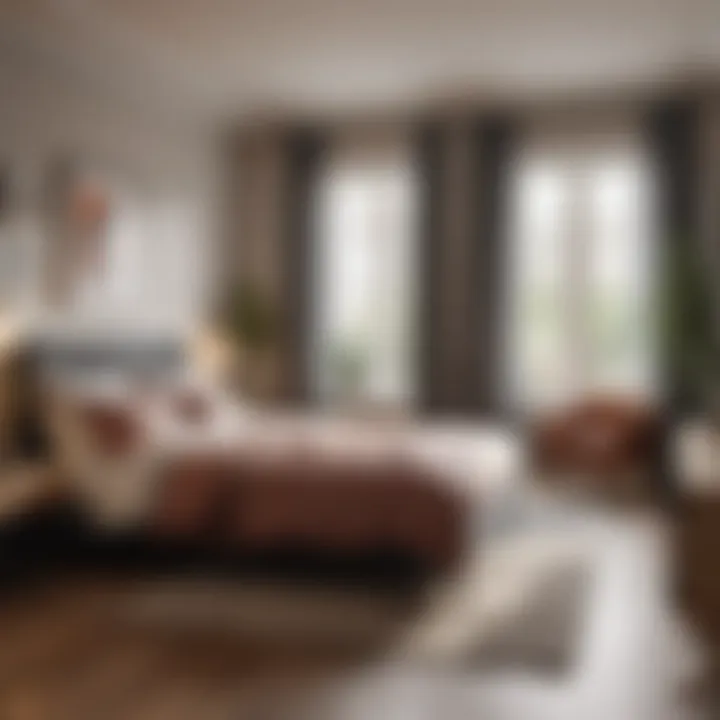
Clutter can quickly become a problem due to the limited storage options in one-room apartments. Without designated spaces for belongings, residents may struggle to keep their areas organized. This can lead to a disorganized environment, which may breed stress and discomfort. To effectively manage space, residents should prioritize minimalism. This means regularly auditing possessions, investing in multi-functional furniture, and using vertical storage solutions, among other strategies. Additionally, if items accumulate, it can exacerbate feelings of confinement and chaos. As a result, maintaining order becomes a crucial factor in enjoying one-room living.
A carefully curated living space can greatly enhance comfort and functionality in one-room apartments.
In summary, while one-room apartments offer affordability and low maintenance, the drawbacks such as limited space, privacy issues, and potential for clutter cannot be overlooked. Prospective residents should weigh these disadvantages against their lifestyle needs before making a decision.
Practical Design Solutions
The concept of practical design solutions is crucial for maximizing the potential of one-room bedroom apartments. These living spaces, often limited in size, require innovative strategies that blend functionality and aesthetic appeal. Well-thought-out design solutions help to address the unique challenges posed by limited square footage and create environments that feel spacious and comfortable. The integration of smart design solutions can significantly enhance the overall living experience, making these spaces not only more enjoyable but also more efficient.
Open-Concept Living
Open-concept living is a popular design approach in one-room apartments. This layout breaks down barriers between designated areas, such as the kitchen, living room, and sleeping space. By removing walls, the apartment appears larger and allows for better flow of natural light. This design choice creates a sense of abundance in an otherwise compact environment.
One key benefit of open-concept living is flexibility. Residents can easily reconfigure their spaces to suit different activities. For instance, a dining table can double as a workspace during the day, and the couch can serve as both a seating area and a place for relaxation. Additionally, open layouts can encourage a more social atmosphere, as individuals feel more connected when moving through a seamless space.
Nevertheless, there are considerations. Without defined boundaries, one must be cautious about noise levels and privacy. Strategic placement of furniture can help to delineate areas while maintaining an open feel.
Zoning Techniques
Zoning techniques refer to the method of defining different areas within a one-room space without the use of walls. This can be achieved through various means, such as furniture arrangement, area rugs, and varying color schemes.
Using furniture as a divider is an effective way to create distinct zones. For example, a tall bookshelf can separate a sleeping area from a living area. Similarly, the use of rugs helps in visually identifying spaces for specific purposes, like dining or lounging. Color also plays a significant role; different wall colors can signify different areas, adding to the overall harmony of the apartment.
Effective zoning not only organizes space but also improves functionality. This design approach allows residents to maintain a sense of privacy while still enjoying the open aspects of the apartment. However, the challenge lies in ensuring that the zones do not feel cramped, requiring careful planning and execution.
Personalization Strategies
Personalization in one-room apartments is vital in making the space feel like home. Tailoring the design to reflect individual tastes enhances emotional well-being and can even alter the perceived size of the space. A few strategies for personalization include using art, unique furniture pieces, and personal decor.
- Art and Decor: Incorporating artwork or personal photographs can introduce character to an apartment. This visibility of personal items can make a small space feel more inviting.
- Custom Furniture: Consider investing in furniture that reflects your style. Custom-built options can maximize space and ensure that each piece serves multiple functions.
- Color and Texture: Subtle changes in color and texture can also convey a personal touch. Soft furnishings, like cushions and throws, provide comfort and can easily be swapped out to refresh the look of the space.
Personalization helps residents connect with their environment and reduces any feelings of claustrophobia that can arise in smaller apartments. Being mindful of one's style while designing can lead to a more satisfying living experience.
"Practical design solutions in one-room apartments are not just about aesthetics; they enhance the quality of life by making the most out of limited space."
In summary, practical design solutions play a vital role in shaping the quality of one-room bedroom apartments. Open-concept living maximizes space and promotes a sociable atmosphere, while zoning techniques effectively delineate areas for functionality. Personalization strategies add a unique touch that transforms these spaces into homes.
Future Trends
Understanding future trends in one-room bedroom apartments is vital for real estate professionals, designers, and homeowners alike. These trends not only shape the market but also influence how space is utilized, which is critical in urban environments where every square foot counts. Being aware of emerging trends allows stakeholders to align their strategies and adapt to shifting preferences effectively.
Technological Integration
The integration of technology in one-room apartments is redefining what is possible in smaller living spaces. Smart home devices, such as Amazon Echo and Google Nest, provide residents with the convenience of controlling their environment through voice commands. This simplification of daily tasks enhances the living experience by making it more efficient.
Moreover, advancements in energy efficiency are becoming essential. Devices that can monitor energy use, like smart thermostats, help occupants save on utility costs while contributing to a greener lifestyle. This forms a trend where technology not only enhances comfort but also emphasizes sustainability, appealing to a demographic that values environmental consciousness.
Emerging Market Trends
Market trends indicate a growing demand for one-room apartments in urban centers. Economic factors, such as rising real estate prices and increased urbanization, drive this shift. Many individuals are now looking to live in compact, well-designed spaces that offer convenience without excessive costs. Moreover, investment in rental properties is increasing as the need for affordable housing intensifies.
Apartments equipped with modern facilities that cater to minimalistic lifestyles are particularly attractive to young professionals. They seek spaces that align with their values of simplicity and efficiency. Such emerging market trends highlight the necessity for developers to stay updated on consumer preferences.
Cultural Shifts in Living Preferences
Cultural changes also play a significant role in shaping the future of one-room apartments. There is a noticeable shift towards urban living, with younger generations prioritizing experiences over possessions. As such, many are willing to trade larger living areas for proximity to work, social activities, and cultural events.
Furthermore, the concept of co-living is gaining momentum, where individuals share common spaces while enjoying private sleeping areas. This model not only reduces costs but also fosters community among residents.
Modern living solutions reflect a blend of technology and evolving cultural values, where convenience meets community engagement.
Culmination
In this article, the discussion focused on the many elements of one-room bedroom apartments. These living spaces have received attention for their practicality and challenges. As urbanization continues to rise, understanding these apartments is vital. This conclusion synthesizes the essential points while underlining their importance for potential residents and designers alike.
Recap of Key Points
One-room apartments are characterized by their compact design, offering various insights into space utilization.
- Architectural Features: Simple layouts and functional designs make them appealing to many.
- Functional Aspects: Space efficiency through storage solutions and multi-functional furnishings is crucial.
- Aesthetic Considerations: Interior design trends emphasize minimalism and smart use of colors.
- Target Demographics: Young professionals and downsizers typically gravitate towards these living spaces.
- Advantages and Disadvantages: While affordability is a plus, limited space can pose challenges.
- Future Trends: Technological advancements will likely shape how these spaces are used.
Final Thoughts
Living in one-room apartments requires a different mindset. Embracing simplicity and functionality offers numerous benefits. As lifestyles change, such homes can be ideal for many. The pursuit of comfort and style in a small area becomes a design challenge. Therefore, exploring creative solutions is essential.
This analysis illustrates that these apartments not only solve housing shortages but also invite innovative design approaches.
Ultimately, as society shifts towards smaller living, one-room apartments may hold the keys to a smarter, sustainable future in housing.



